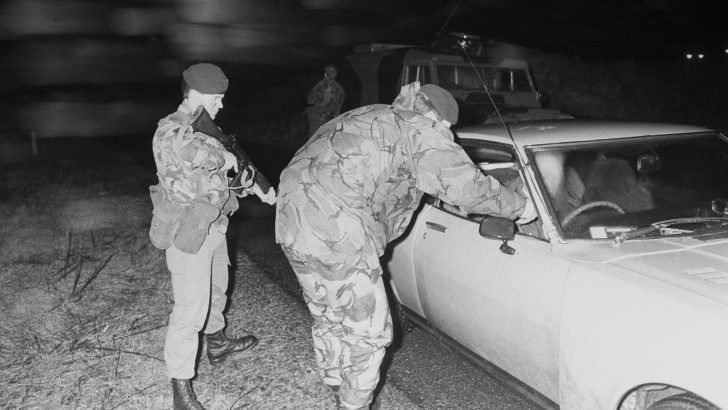UDR Declassified, by Micheal Smith (Merrion Press, €18.95/£14.50)
The Ulster Defence Regiment (UDR) was set up in late 1969 as the Ulster Special Constabulary (B Specials) was being disbanded as a result of its role in the sectarian violence which broke out in Derry and Belfast the previous August. Inevitably, large numbers of the B Specials, who were 100% Protestant and much feared by Catholics when on night patrol, joined the UDR. The UDR would not be a police reserve, however, but the biggest regiment in the British Army with almost 10,000 members.
Non-sectarian force
The British Labour Government of the time wanted the UDR to attract Catholics and to be seen as a non-sectarian force. Some Catholic bishops and nationalist politicians such as Austin Curry encouraged Catholics to join. An estimated 20% of the early applicants were Catholic. But from then on it was all downhill. After internment in 1971, Catholic UDR members were targeted by the Provisional IRA. Numbers dropped sharply.
This book by a former official in the Irish Department of Foreign Affairs and now working with the Pat Finucane Centre in Belfast draws on official British files to show how the UDR became an overwhelmingly Protestant force easily infiltrated by loyalist paramilitaries. The collusion between UDR members with loyalist gangs resulted in many murders of innocent Catholics, the Miami Showband massacre being just one example.
{{The Dublin Government also kept a close eye on the UDR and had an updated list of members charged with killings and thefts but with their UDR membership not disclosed in court”
Much of this collusion has already been detailed but this book uses recently opened official files, of the British Government and defence forces, to reveal how much senior officials and even ministers suspected that UDR collusion was not just a case of a “few rotten eggs” but was widespread. The official toleration of the Ulster Defence Association (UDA), was widely exploited by its loyalist members. Many joined the UDR to get weapons training and then resigned. Others persuaded friends in the UDR to let them steal rifles and submachine guns.
Amazingly, the UDA, which used the nom de guerre, Ulster Freedom Fighters, to claim murders of Catholics, was not only legal until 1992 but it figured in Army plans for dealing with civil unrest. The book quotes from a secret report into “Subversion in the UDR” prepared for the British Prime Minister. In a seven-month period 73 UDR were discharged and 20 more had resigned when “subversive traces” came to light.
The Dublin Government also kept a close eye on the UDR and had an updated list of members charged with killings and thefts but with their UDR membership not disclosed in court. This list was often passed on to London.
The author acknowledges that the bulk of the UDR were mostly farmers, workers and unemployed (the Protestant middle class avoided joining up) who genuinely wanted to keep Northern Ireland free of paramilitary violence. Almost 200 active UDR were murdered by the IRA and 62 after leaving the UDR.
By the 1980s the British acknowledged that, in the words of one official, the UDR was “an inescapably sectarian body”. Less than three per cent were Catholics. Its days were numbered. In 1992 it was merged into the Royal Irish Regiment. It was, in its way, the end of an era in Ulster.


 Members of the Ulster Defence Regiment search a car at a checkpoint while on patrol in County Down, Northern Ireland on February 05, 1984. (Photo by Terry Disney/Express/Getty Images)
Members of the Ulster Defence Regiment search a car at a checkpoint while on patrol in County Down, Northern Ireland on February 05, 1984. (Photo by Terry Disney/Express/Getty Images) 